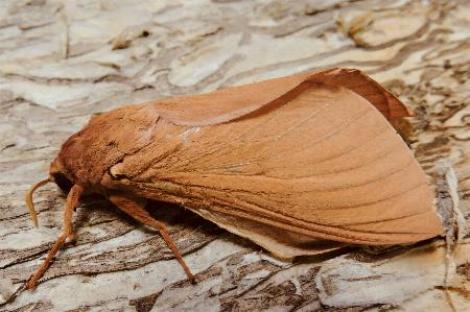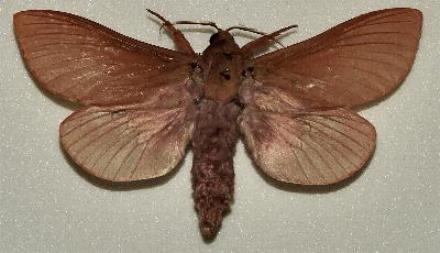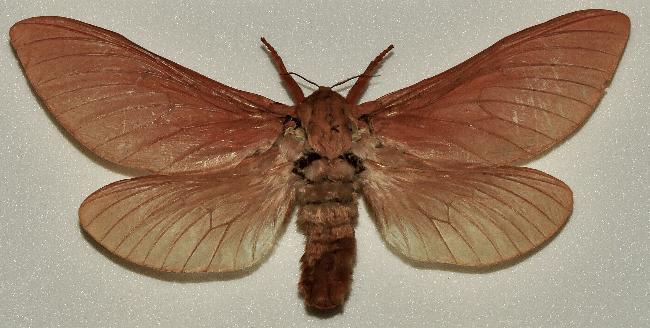
| (formerly known as Bordaia paradoxa) HEPIALIDAE, HEPIALOIDEA | (donherbisonevans@yahoo.com) and Stella Crossley |

male
(Photo: courtesy of Paul Kay, Wandoo State Forest, Western Australia)

| (formerly known as Bordaia paradoxa) HEPIALIDAE, HEPIALOIDEA | (donherbisonevans@yahoo.com) and Stella Crossley |

male
(Photo: courtesy of Paul Kay, Wandoo State Forest, Western Australia)
The moths of his species have reddish-brown wings. The male moths have bipectinate antennae and have a wingspan of about 10 cms. The males can have beautiful pinkish purple hindwings, but the colour fades to brown in dead specimens.

The female moths, compared with the males, are bigger with a fatter body, but have shorter and thinner antennae. The females have a wingspan of about 15 cms.

The species has been found in

Further reading :
Thomas J. Simonsen,
Splendid Ghost Moths and their Allies,
A Revision of Australian Abantiades, Oncopera, Aenetus, Archaeoaenetus and Zelotypia (Hepialidae),
Monographs on Australian Lepidoptera Volume 12,
CSIRO Publishing, Melbourne, 2018, pp. 55, etc., Plates 33, 38.
Norman B. Tindale,
Revision of the Australian Ghost Moths (Lepidoptera Homoneura, Family Hepialidae) ,
Records of the South Australian Museum,
Volume 4, Part 4 (1932), pp. 509-510, fig. 19.
 caterpillar |  butterflies |  Lepidoptera |  moths |  caterpillar |
(written 8 September 2016, updated 26 January 2020)